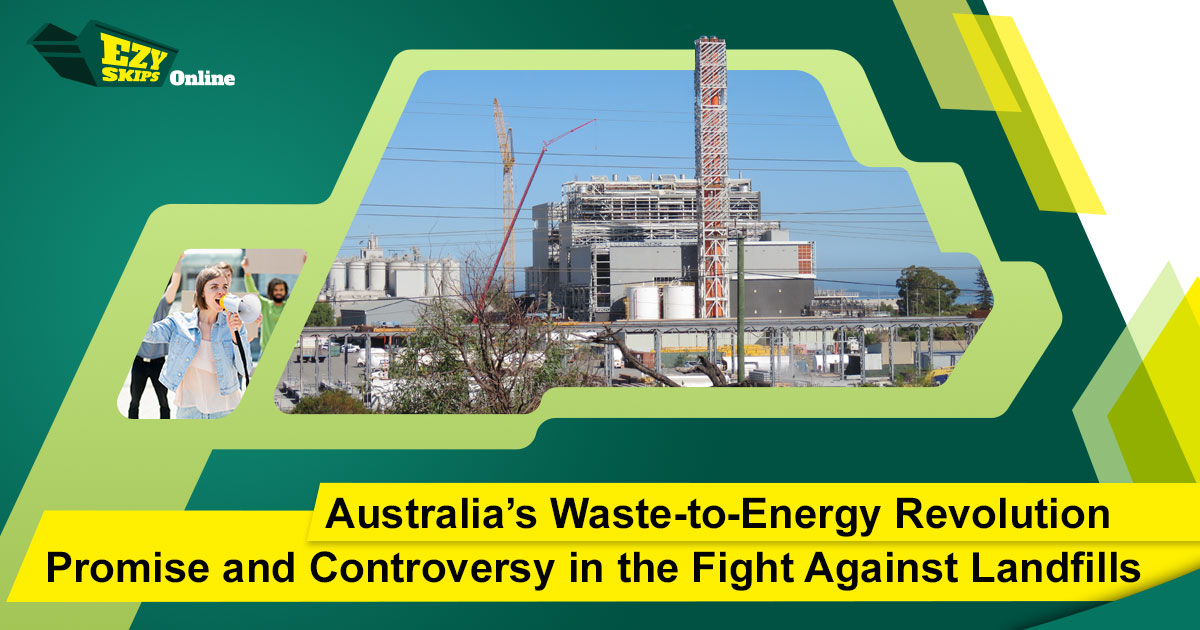
Australia is taking a bold step in waste management with the launch of its first large-scale waste-to-energy facility in Kwinana, just outside of Perth. This facility is the first of its kind in the country, signalling a significant shift in how Australia deals with its household waste.
While it promises to reduce reliance on traditional landfills, this new approach has sparked both excitement and concern about its environmental impact.
A Growing Trend in Waste Management
The Kwinana Energy Recovery facility is at the forefront of Australia’s waste-to-energy movement. With the ability to process 460,000 tonnes of non-recyclable waste each year—around 25% of Perth’s landfill waste—the facility is set to become a game-changer.
This plant is just the beginning, with at least ten similar projects in the pipeline across the country. Together, these facilities could handle up to 2 million tonnes of waste annually, or a quarter of Australia’s household waste.
Why Waste-to-Energy Is Gaining Support
Proponents of waste-to-energy technology argue that it offers several benefits, including:
- Reducing reliance on landfills: These facilities offer a way to divert waste that would otherwise sit in landfills for years.
- Energy generation: Waste that can’t be recycled can instead be burned to produce electricity, providing a useful resource from something that would otherwise be discarded.
- Cost savings: By reducing the need for landfill space, local councils could save money on the rising costs of managing waste disposal.
- Strict regulation: Air pollution and ash from the burning process are managed under existing environmental standards.
The City of Gosnells, home to around 130,000 people, has already signed up to send its waste to the Kwinana facility. Mayor Terresa Lynes has praised the project, calling it “the end of landfill” for their community.
Concerns From Environmental Groups
Not everyone is convinced that waste-to-energy is the right solution for Australia’s waste problem. Environmental groups and some experts have raised several concerns about the technology:
- Impact on the Circular Economy
Critics argue that waste-to-energy undermines the principles of a circular economy, where materials are kept in use for as long as possible. Burning waste, they say, prevents the recovery of valuable materials. - Recycling Rates
There’s evidence from other countries that once waste-to-energy plants are introduced, recycling rates can stagnate. These plants require a constant flow of waste to operate, which could discourage further efforts to reduce and recycle waste. - Environmental Impact
Zero Waste Australia has been vocal about its opposition to waste-to-energy, describing it as “the most polluting and expensive way to generate energy and manage waste.”
Lessons From Overseas
Australia isn’t the first to explore waste-to-energy technology. In Europe, roughly 500 waste-to-energy plants are already in operation.
But some countries, like Denmark, are rethinking their use of the technology. Denmark plans to reduce its waste incineration capacity by 30% between 2020 and 2030, focusing instead on improving recycling and reducing overall waste.
The Path Ahead
As Australia moves forward with waste-to-energy, the conversation around its potential benefits and drawbacks is far from over. While the technology offers a solution to the growing landfill crisis, questions remain about its long-term environmental effects and how it fits with sustainable waste management.
Using services like skip bins Rockingham with Ezyskips Online can be part of a balanced approach, helping Australians reduce waste while considering other strategies like waste-to-energy to support environmental goals.

